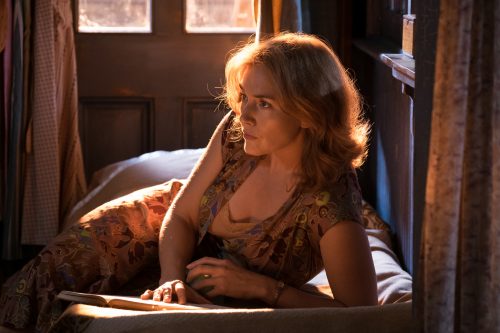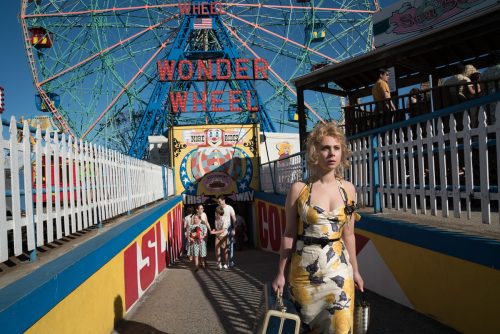Veteran cinematographer Vittorio Storaro previews FilmLight’s graded looks on Wonder Wheel set
For his 50th movie as a director, Woody Allen chose a story set in and around the famous Coney Island amusement park in 1950s New York. To create a convincing period look and feel, the creative team established a collaborative colour pipeline relying on the Baselight Linked Grade (BLG) render-free workflow provided by the tools from FilmLight.
Wonder Wheel, from Amazon Studios, reunites Allen with veteran cinematographer Vittorio Storaro, who was behind the camera for Allen’s Café Society, where his cinematography earned the biggest raves from critics reviewing the film. The movie also reunites colourist Anthony Raffaele of Technicolor PostWorks New York and DIT Simone d’Arcangelo.

Kate Winslet in Woody Allen’s WONDER WHEEL.
Photo by: Jessica Miglio. © 2017 Gravier Productions, Inc.
Working closely together, core looks were created by Raffaele in Baselight and then d’Arcangelo used FilmLight’s Prelight application on set, which not only imposed these looks on the raw footage, but gave him the opportunity to adjust the grade to meet the needs of Storaro and Allen.
“Vittorio [Storaro] is a very traditional cinematographer, who thinks in terms of photo-chemical effects,” Raffaele explained. “He grew up with the idea of flashing the negative – which gives you more details in the shadows – and flashing the positive for more in the highlights. So I created layers for each of those elements in Baselight and gave them to Simone, who used layer blending in Prelight to achieve the exact balance required.”
On set throughout the production, d’Arcangelo interpreted the requests from Storaro to present the best possible grades. “The first picture we see is like the first love,” he said. “We should make sure it is as close as possible to the one the cinematographer and director wants. This means for me I have to have a solid relationship with the colourist from the beginning. I love to feel in perfect harmony with the cinematographer and the colourist, to be in the chain in all the creative steps.”

Justin Timberlake in Woody Allen’s WONDER WHEEL.
Photo by: Jessica Miglio. © 2017 Gravier Productions, Inc.
The 1950s setting of the movie meant that there was a need for a lot of VFX. The apartment at the centre of the story, for example, is in the middle of the park, with the lights and bustle – and the famous Coney Island Ferris wheel, the wonder wheel of the title – visible through the window. Replicating the studio interior to VFX exteriors called for careful matching.
“This is one of the reasons why we really wanted to use Prelight,” said Raffaele. “We could create looks and know on set how it was going to feel. Vittorio could say ‘it should be warmer because of the sunset on set, and then made it happen in the grade.”
D’Arcangelo added, “One of the tools we used most was the Hue Angle. That gave us the chance to have a strong contrast, but still select the highlight and the shadow to get rich detail in each. Prelight had everything I needed. It gave us more tools, and more consistency in our workflow. The only choice for us was Prelight.”

Juno Temple in Woody Allen’s WONDER WHEEL.
Photo by: Jessica Miglio. © 2017 Gravier Productions, Inc.
Prelight is a Mac application that reads the Baselight standard BLG format grading metadata and imposes it on the raw footage as shot. It includes a full Baselight toolkit to be able to tweak or create grades, and allows for multiple layers that ensure windows and tracking can be established, as well as allowing for effects like introducing negative flashing.
Wonder Wheel was an ACES production workflow and shot using Sony cameras, in 4K and high dynamic range. It went on general release on 1 December 2017.



